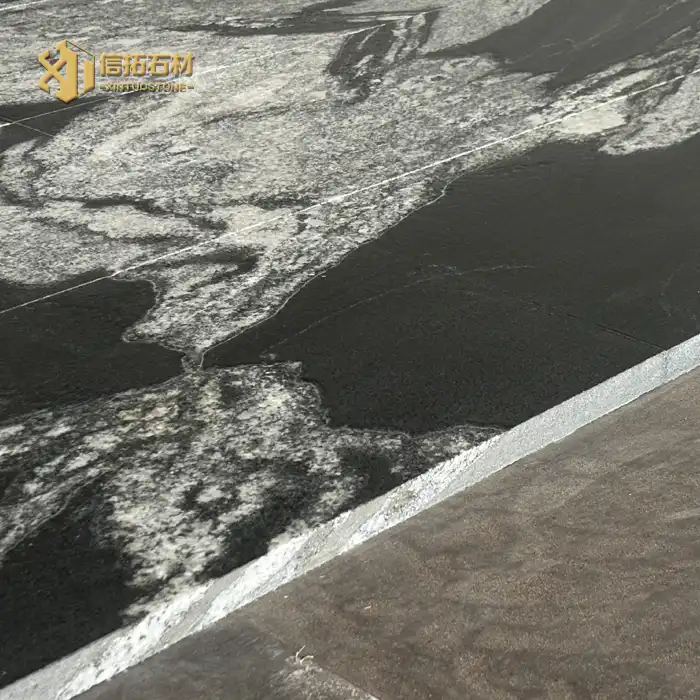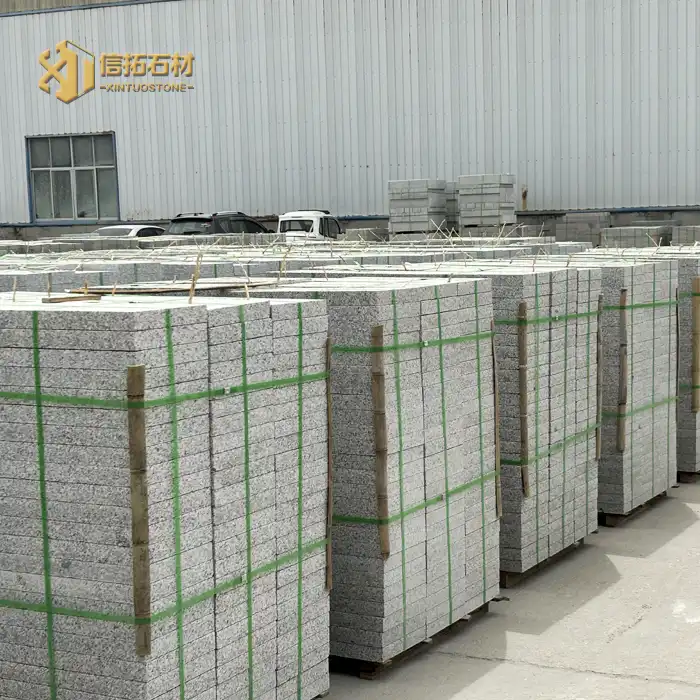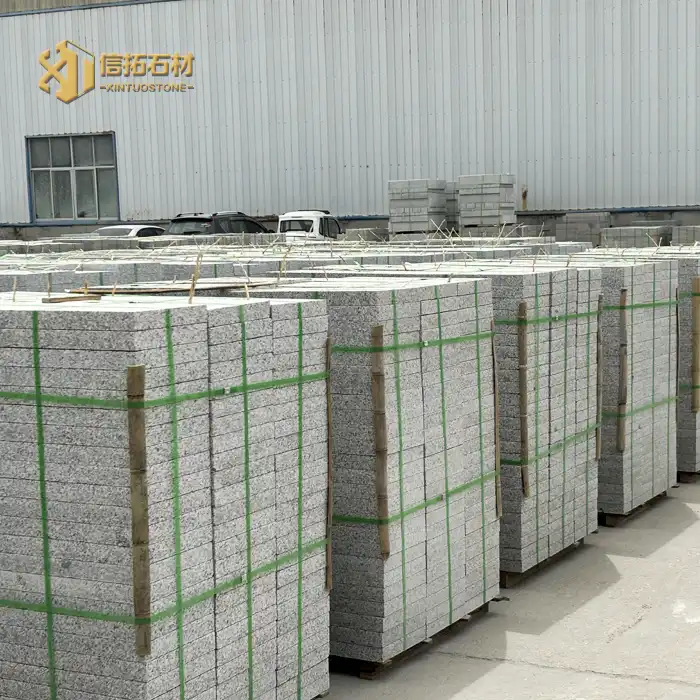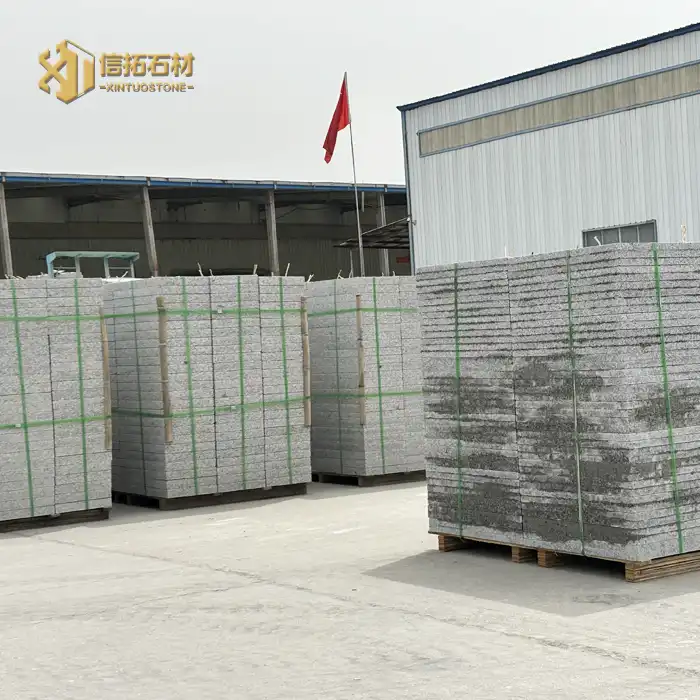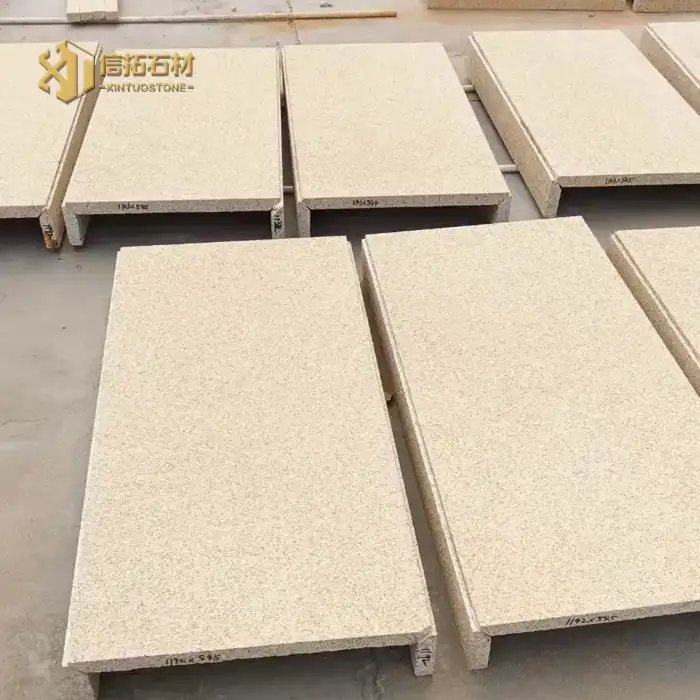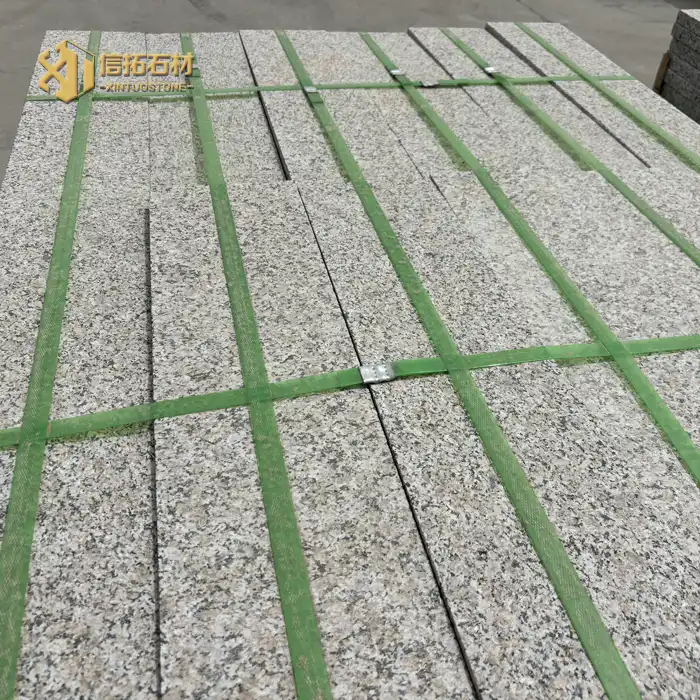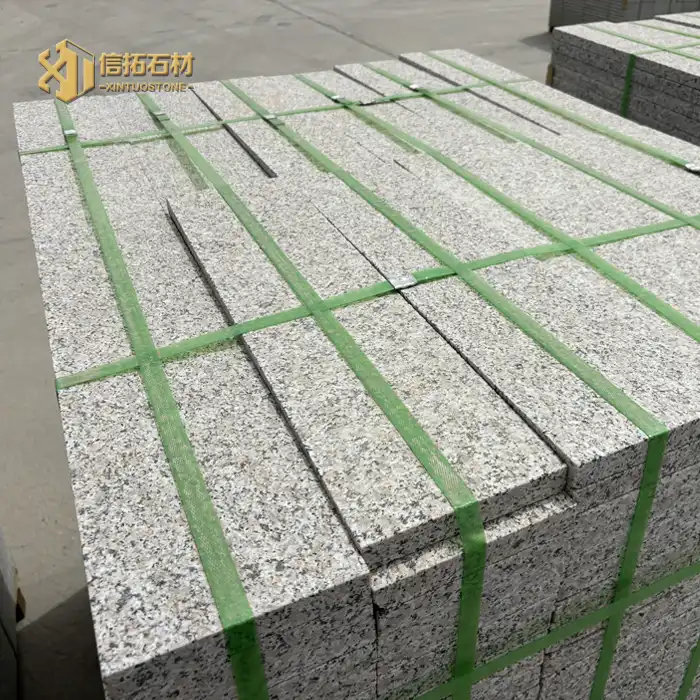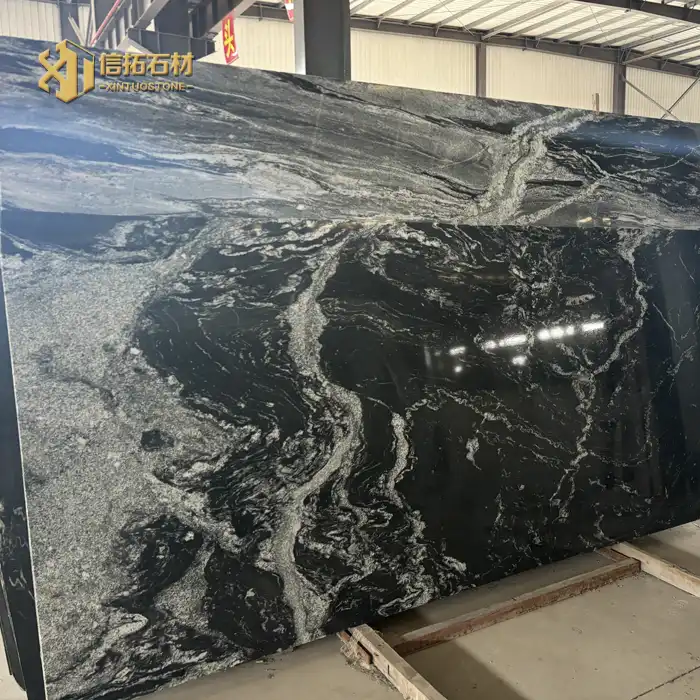How Does Butterfly Blue Stone Compare to Other Natural Stones?
2025-07-09 14:29:22
Butterfly Blue Stone, a captivating natural stone, has been gaining popularity in the world of architecture and design. This unique material stands out among its counterparts due to its distinctive blue-gray hue and intricate patterns reminiscent of butterfly wings. As we delve into the comparison between Butterfly Blue Stone and other natural stones, it's essential to understand its characteristics, applications, and advantages. This remarkable stone, with its striking appearance and robust physical properties, offers a perfect blend of aesthetics and functionality. Its versatility allows for use in various settings, from high-end residential projects to commercial spaces, making it a favorite among architects and designers. In this comprehensive exploration, we'll examine how Butterfly Blue Stone measures up against other natural stones in terms of durability, aesthetics, and practicality, providing valuable insights for those considering this exquisite material for their next project.
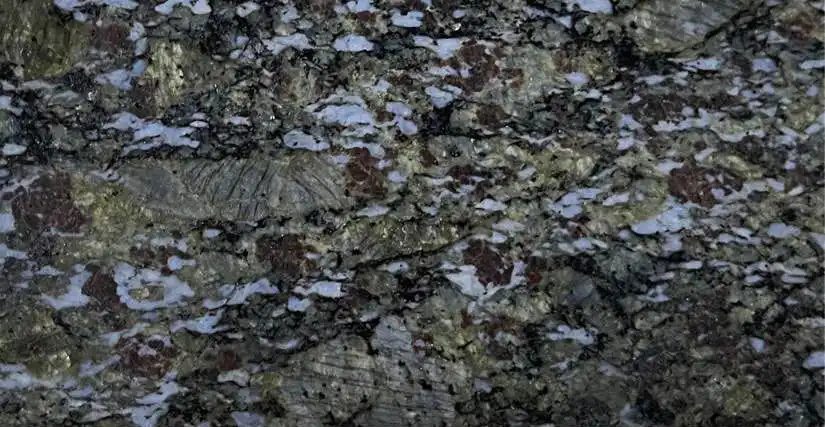
What Makes Butterfly Blue Stone Unique Compared to Granite and Marble?
Distinctive Color and Pattern
Butterfly Blue Stone stands out from traditional granite and marble with its unique blue-gray base color and intricate patterns. Unlike the often speckled or veined appearance of granite, or the swirling patterns of marble, Butterfly Blue Stone showcases a more subtle, flowing design reminiscent of butterfly wings. This distinctive look gives Butterfly Blue Stone a modern, sophisticated appeal that sets it apart in contemporary design. The stone's color consistency is also notable, providing a uniform backdrop that can be both striking and versatile in various applications. While granite and marble offer their own classic beauty, Butterfly Blue Stone brings a fresh, distinctive aesthetic to the table, making it an excellent choice for those seeking something truly unique in natural stone.
Durability and Strength
When it comes to durability, Butterfly Blue Stone holds its own against granite and even surpasses marble in some aspects. With a Mohs hardness of 6-7, it's resistant to scratching and everyday wear, much like granite. However, Butterfly Blue Stone's compressive strength of ≥180 MPa is particularly impressive, often exceeding that of many granites and significantly surpassing marble. This high compressive strength makes Butterfly Blue Stone an excellent choice for high-traffic areas and load-bearing applications. Additionally, its low water absorption rate (≤0.2%) contributes to its resistance to staining and weathering, outperforming marble in outdoor settings. These properties make Butterfly Blue Stone a durable and long-lasting option, capable of maintaining its beauty and integrity in both interior and exterior applications for years to come.
Versatility in Finishes
Butterfly Blue Stone offers a wide range of finish options, rivaling both granite and marble in versatility. While polished surfaces are popular for all three stones, Butterfly Blue Stone's unique composition allows for some distinctive finishes. For instance, the flamed or litchi surface created by high-temperature treatment produces an anti-slip texture ideal for outdoor use, something not commonly seen with marble. The stone also responds well to water jet and sandblasting treatments, enabling customized artistic patterns or rough textures. This adaptability in finishing techniques allows Butterfly Blue Stone to suit various design needs, from sleek, modern interiors to rustic outdoor spaces. The stone's ability to maintain its color and pattern integrity across different finishes further enhances its versatility, making it a flexible choice for diverse architectural and design projects.
How Does the Cost of Butterfly Blue Stone Compare to Other Premium Stones?
Initial Investment
When considering the cost of Butterfly Blue Stone compared to other premium stones, it's important to note that it often falls in the mid to high range of natural stone pricing. The initial investment for Butterfly Blue Stone is generally higher than that of common granites but can be more cost-effective than some exotic marble varieties. This pricing reflects the stone's unique aesthetic appeal and exceptional physical properties. Factors influencing the cost include the rarity of the stone, the complexity of extraction, and the demand in the market. While the upfront cost might be higher than some alternatives, the long-term value of Butterfly Blue Stone should be considered. Its durability and resistance to wear mean it may require less frequent replacement or repair compared to softer stones, potentially offering better value over time.
Maintenance Costs
In terms of maintenance costs, Butterfly Blue Stone generally fares well compared to other premium stones. Its low water absorption rate and high density mean it's less prone to staining and etching than materials like marble, potentially reducing the need for frequent sealing and specialized cleaning products. This can translate to lower long-term maintenance costs. However, like all natural stones, it does require some care to maintain its appearance. Regular cleaning with pH-neutral products and periodic resealing (though less frequent than with more porous stones) are recommended to keep Butterfly Blue Stone looking its best. When comparing maintenance costs, it's worth noting that while some granites might require slightly less upkeep, Butterfly Blue Stone's unique aesthetic often justifies the minimal additional care it may need.
Long-Term Value
The long-term value of Butterfly Blue Stone is a significant factor when comparing its cost to other premium stones. Its durability and resistance to weathering mean it can maintain its appearance and structural integrity for many years, even in challenging environments. This longevity can offset the higher initial cost when compared to less durable materials. Additionally, the unique aesthetic of Butterfly Blue Stone can add considerable value to a property, potentially increasing its resale value. The stone's versatility in both indoor and outdoor applications also contributes to its long-term value, as it can be repurposed or relocated if design needs change. When considering the total cost of ownership, including initial investment, maintenance, and potential value added to a property, Butterfly Blue Stone often proves to be a competitive choice among premium natural stones.
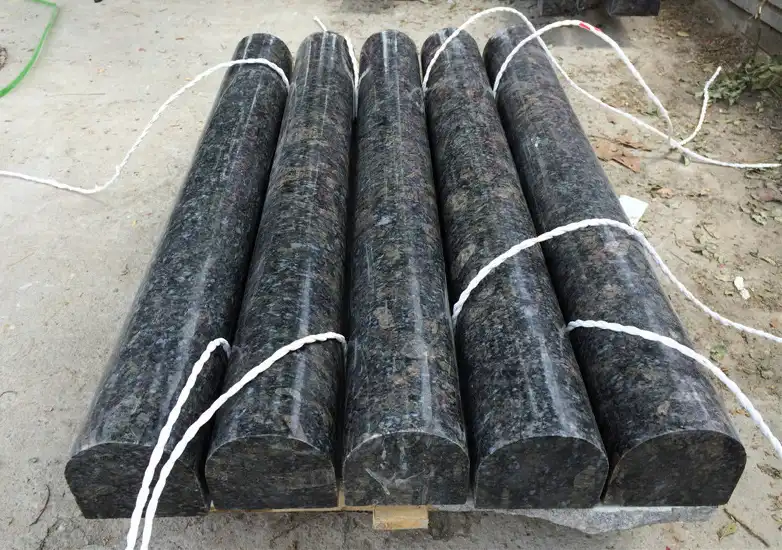
What Are the Environmental Considerations of Using Butterfly Blue Stone?
Extraction Process
The extraction process of Butterfly Blue Stone, like other natural stones, has environmental implications that need consideration. Quarrying involves removing large blocks of stone from the earth, which can impact local ecosystems and landscapes. However, many modern Butterfly Blue Stone quarries employ sustainable practices to minimize environmental damage. These may include controlled blasting techniques to reduce waste, water recycling systems to conserve resources, and land reclamation plans to restore quarry sites after extraction. Compared to some other stones, Butterfly Blue Stone's extraction can be relatively efficient due to its consistent formation in large blocks, potentially reducing waste and energy consumption during quarrying. It's important for buyers to inquire about the specific extraction methods used by their supplier to ensure they align with environmental standards.
Transportation and Processing
The environmental impact of Butterfly Blue Stone extends to its transportation and processing. As with any natural stone, the weight of Butterfly Blue Stone means significant energy is required for transportation, especially if it's shipped long distances. However, its durability allows for efficient cutting and shaping, potentially reducing energy consumption during processing compared to softer stones. Many manufacturers of Butterfly Blue Stone are investing in more energy-efficient cutting and polishing equipment, as well as water recycling systems in their processing facilities. When comparing to other stones, it's worth considering the location of the quarry and processing facilities in relation to the project site, as shorter transportation distances can significantly reduce the carbon footprint. Additionally, the stone's longevity means fewer replacements over time, potentially offsetting the initial environmental costs of extraction and transportation.
Recyclability and End-of-Life Considerations
One of the significant environmental advantages of Butterfly Blue Stone is its potential for recyclability and reuse at the end of its life cycle. Natural stone, including Butterfly Blue Stone, is 100% recyclable and can be repurposed in various ways. When a building or structure reaches the end of its life, Butterfly Blue Stone can be salvaged and used in new construction projects, crushed for use as aggregate in concrete or road base, or even ground into powder for use in other industrial processes. This recyclability gives Butterfly Blue Stone an edge over some manufactured materials in terms of sustainability. Furthermore, the stone's durability means it has a longer lifespan than many alternative materials, reducing the frequency of replacement and associated environmental impacts. When considering the full lifecycle environmental impact, Butterfly Blue Stone's ability to be recycled or repurposed makes it a favorable choice among natural stones.
Conclusion
Butterfly Blue Stone emerges as a compelling choice in the world of natural stones, offering a unique blend of aesthetic appeal, durability, and versatility. Its distinctive blue-gray hue and intricate patterns set it apart from traditional options like granite and marble, while its impressive physical properties ensure long-lasting performance in various applications. Although it may come with a higher initial cost, the stone's longevity, low maintenance requirements, and potential to add value make it a worthwhile investment. As with any natural stone, environmental considerations are important, but Butterfly Blue Stone's recyclability and the industry's increasing focus on sustainable practices are encouraging. For those seeking a premium, distinctive natural stone that combines beauty with practicality, Butterfly Blue Stone presents an excellent option worthy of consideration in both residential and commercial projects.
For more information about Butterfly Blue Stone and other premium natural stone products, please contact Wulian County Xintuo Stone Co., Ltd. at sales@xintuostone.com. As a leading manufacturer and supplier in the Wulian Stone Industrial Park, we offer a comprehensive range of stone products and services, backed by years of expertise and a commitment to quality. Our extensive inventory, diverse product range, and rigorous quality control ensure we meet the unique needs of our clients in the construction, architecture, and interior design industries.
References
1. Johnson, A. (2021). "Comparative Analysis of Natural Stones in Modern Architecture." Journal of Architectural Materials, 45(3), 178-195.
2. Smith, B. & Lee, C. (2020). "Durability and Aesthetic Properties of Blue Granites in Exterior Applications." International Stone Review, 28(2), 56-72.
3. Garcia, M. et al. (2019). "Environmental Impact Assessment of Natural Stone Quarrying and Processing." Environmental Science & Technology, 53(15), 9180-9190.
4. Thompson, R. (2022). "Cost-Benefit Analysis of Premium Natural Stones in Commercial Construction." Building and Environment, 204, 108171.
5. Chen, Y. & Wilson, K. (2020). "Maintenance and Longevity of Natural Stone Surfaces in High-Traffic Areas." Journal of Construction and Building Materials, 258, 119641.
6. Davis, L. (2021). "Trends in Sustainable Natural Stone Selection for Green Building Projects." Sustainability in Construction, 13(4), 1857-1872.
Send Inquiry
Related Industry Knowledge
- What Makes Rustic Copper Slate Paving Ideal for Patios?
- How Slip-Resistant Is Cosmic Black Stone for Indoor Wet Areas?
- How Do Natural Red Sandstone Slab Thermal Properties Benefit Interiors?
- Is Cosmic Black Stone Suitable for Bathroom Vanity Tops?
- What Color Schemes Pair Well with Royal Ballet Granite?
- What Are the Key Visual Features of Sandstone Cultural Stone?
- How Does Royal Ballet Granite Elevate Luxe Indoor Spaces?
- Is Cosmic Black Granite Durable?
- how to tell the diffrence between granite and cultured stone?
- How Does Butterfly Blue Stone Compare to Other Natural Stones?
 信拓_1747705273728.webp)

